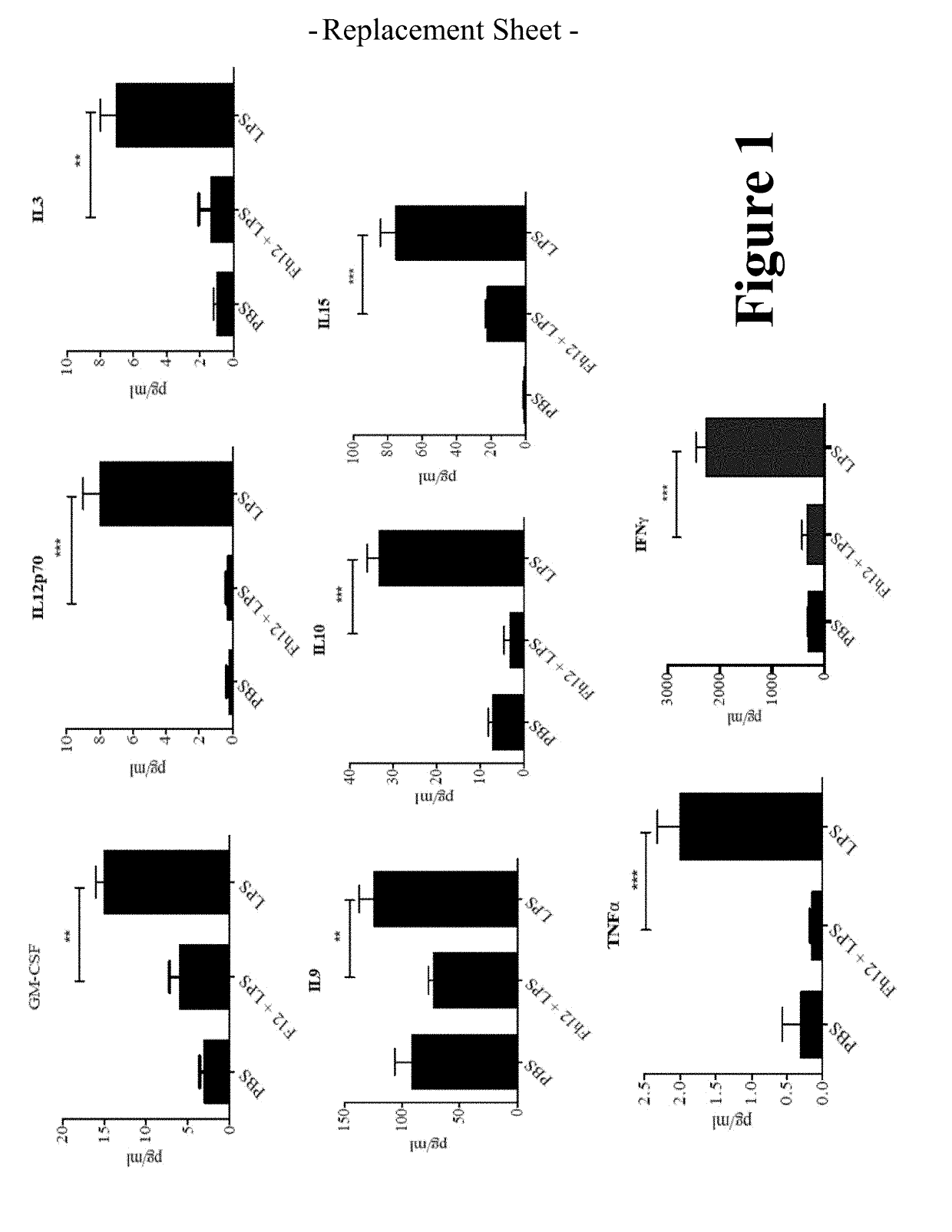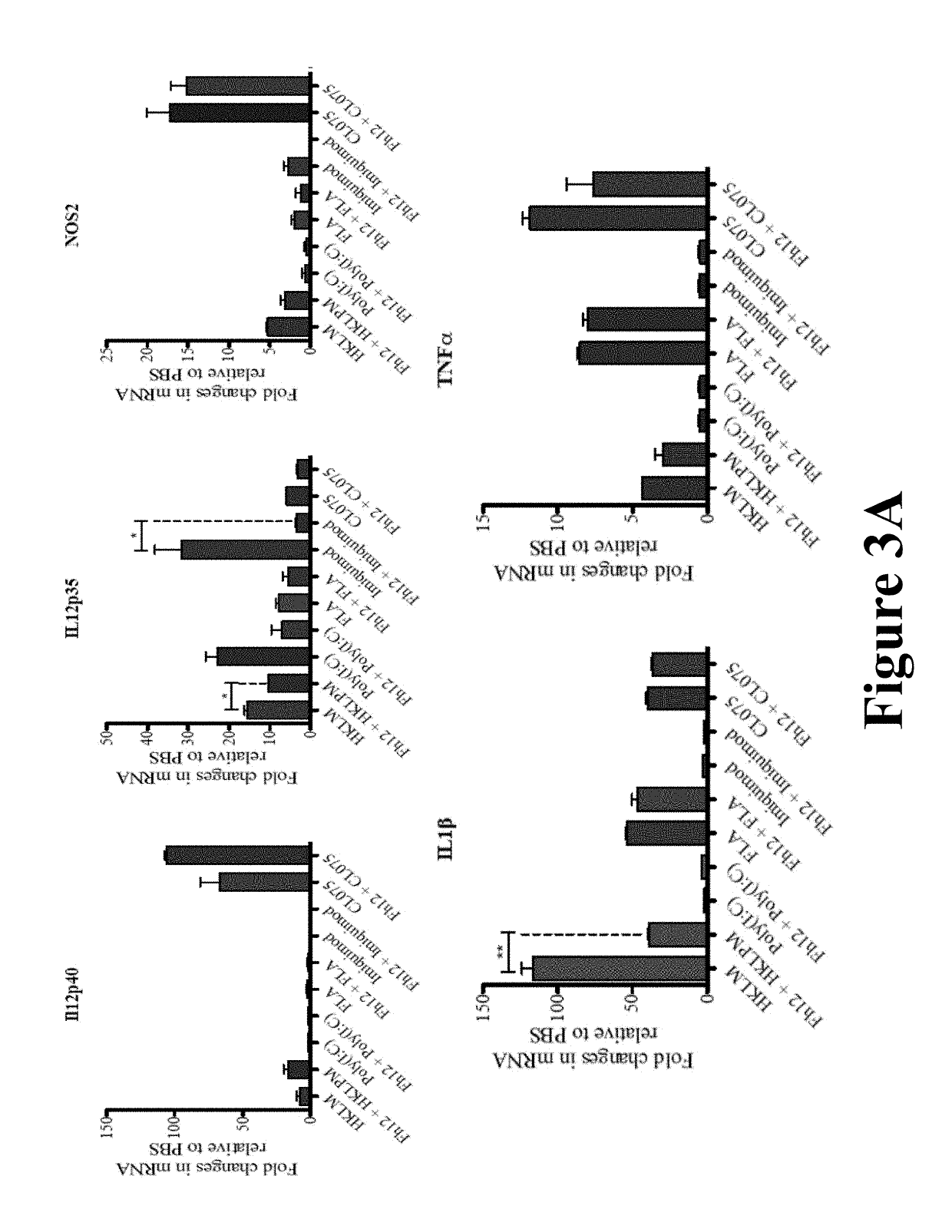Fasciola hepatica fatty acid binding protein a novel anti-inflammatory molecule
a technology of fasciola hepatica and fatty acid binding protein, which is applied in the direction of peptide/protein ingredients, pharmaceutical active ingredients, medical preparations, etc., can solve the problems of economic losses estimated at more than $3 billion annually, and no studies have investigated whether fabps have anti-inflammatory effects or whether they may interact with cells of the host immune system, etc., to suppress the expression of inflammatory cytokines, suppress the expression, and improve the phagocytic capacity of bmm
- Summary
- Abstract
- Description
- Claims
- Application Information
AI Technical Summary
Benefits of technology
Problems solved by technology
Method used
Image
Examples
Embodiment Construction
[0042]Materials and Methods
[0043]Animals
[0044]C57BL / 6 female mice, 6 to 8 weeks old, were purchased from Charles River (Charles River Lab. Inc., Wilmington Mass., USA). B6.12954 CD14 knockout (CD14− / −) female mice (on C57BL / 6 background), 6 to 8 weeks old, were purchased from Jackson Laboratory (Bar Harbor, Me.). All mice were kept under conventional germ-free conditions in the animal care facility of the University of Puerto Rico School of Medicine and treated according to Institutional Animal Care and Use Committee Standards (IACUC protocol #7870215).
[0045]Preparation of Soluble Whole Worm Extract of Adult F. hepatica (FhWE)
[0046]F. hepatica adult worms were homogenized with a Teflon homogenizer in 0.1M phosphate buffered saline (PBS), pH 7.4, in the presence of a protease inhibitor cocktail and then centrifuged at 30,000×g for 30 min at 4° C. as previously described. The supernatant was used immediately or stored at −20° C. until use for the purification of FABPs.
[0047]Purificati...
PUM
| Property | Measurement | Unit |
|---|---|---|
| pH | aaaaa | aaaaa |
| concentration | aaaaa | aaaaa |
| concentration | aaaaa | aaaaa |
Abstract
Description
Claims
Application Information
 Login to View More
Login to View More - R&D
- Intellectual Property
- Life Sciences
- Materials
- Tech Scout
- Unparalleled Data Quality
- Higher Quality Content
- 60% Fewer Hallucinations
Browse by: Latest US Patents, China's latest patents, Technical Efficacy Thesaurus, Application Domain, Technology Topic, Popular Technical Reports.
© 2025 PatSnap. All rights reserved.Legal|Privacy policy|Modern Slavery Act Transparency Statement|Sitemap|About US| Contact US: help@patsnap.com



